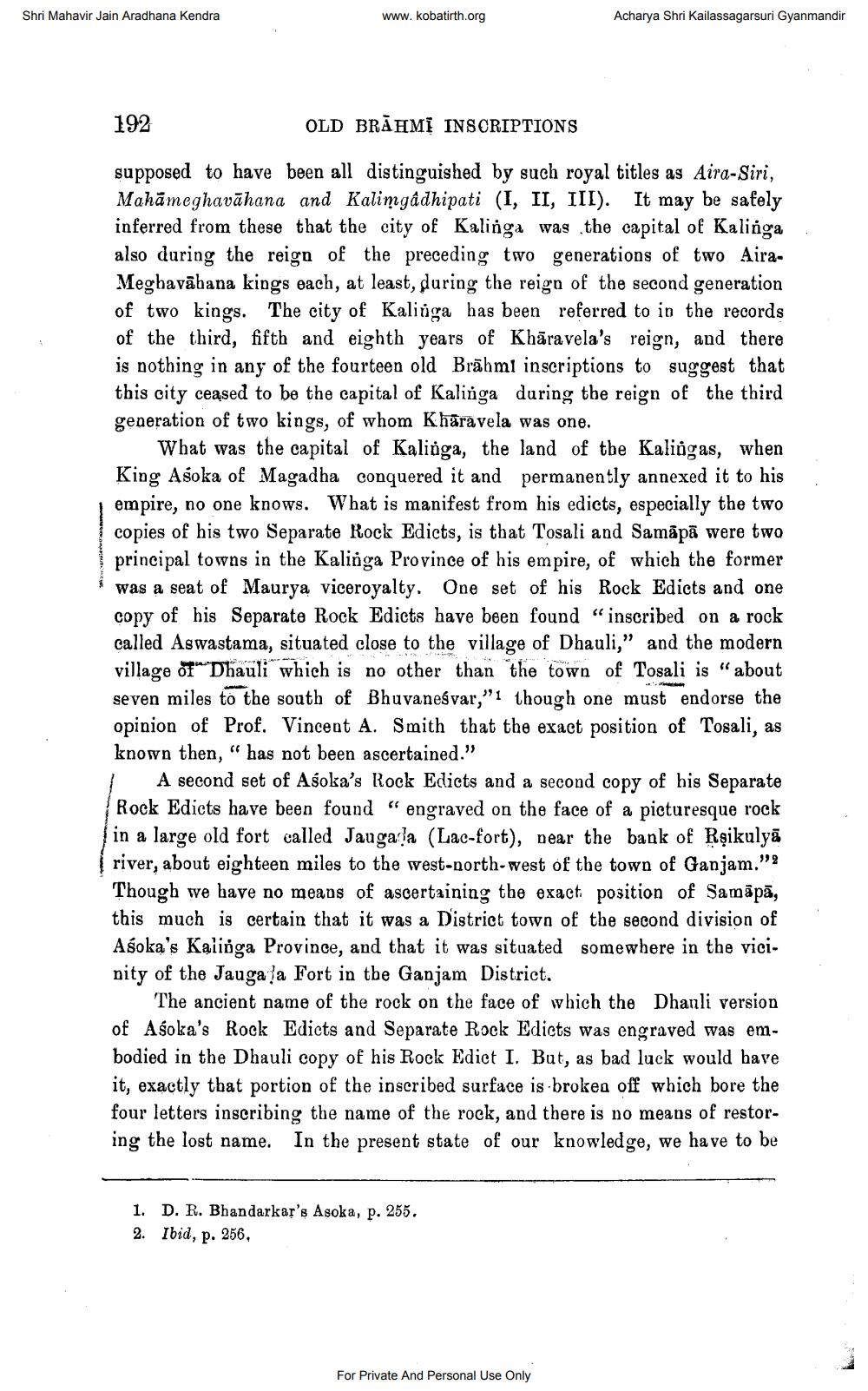________________
Shri Mahavir Jain Aradhana Kendra
www.kobatirth.org
Acharya Shri Kailassagarsuri Gyanmandir
192
OLD BRAHMI INSCRIPTIONS
supposed to have been all distinguished by such royal titles as Aira-Siri, Mahā meghavāhana and Kalimgâdhipati (I, II, III). It may be safely inferred from these that the city of Kalinga was the capital of Kalinga also during the reign of the preceding two generations of two AiraMeghavāhana kings each, at least, during the reign of the second generation of two kings. The city of Kalinga has been referred to in the records of the third, fifth and eighth years of Khāravela's reign, and there is nothing in any of the fourteen old Brāhmi inscriptions to suggest that this city ceased to be the capital of Kalinga during the reign of the third generation of two kings, of whom Khāra vela was one.
What was the capital of Kalioga, the land of the Kaliogas, when King Asoka of Magadha conquered it and permanently annexed it to his empire, no one knows. What is manifest from his edicts, especially the two copies of his two Separate Rock Edicts, is that Tosali and Samāpā were two principal towns in the Kalinga Province of his empire, of which the former was a seat of Maurya viceroyalty. One set of his Rock Edicts and one copy of his Separate Rock Edicts have been found “inscribed on a rock called Aswastama, situated close to the village of Dhauli," and the modern village 07 Dhauli which is no other than the town of Tosali is "about seven miles to the south of Bhuvanešvar,"1 though one must endorse the opinion of Prof. Vincent A. Smith that the exact position of Tosali, as known then," has not been ascertained."
A second set of Asoka's Rock Edicts and a second copy of his Separate Rock Edicts have been found “engraved on the face of a picturesque rock
in a large old fort called Jaugala (Lac-fort), near the bank of Rșikulyā | river, about eighteen miles to the west-north-west of the town of Ganjam."?
Though we have no means of ascertaining the exact position of Samāpā, this much is certain that it was a District town of the second division of Asoka's Kalinga Province, and that it was situated somewhere in the vicinity of the Jaugała Fort in the Ganjam District.
The ancient name of the rock on the face of which the Dhanli version of Asoka's Rock Edicts and Separate Rock Edicts was engraved was embodied in the Dhauli copy of his Rock Edict I. But, as bad luck would have it, exactly that portion of the inscribed surface is broken off which bore the four letters inscribing the name of the rock, and there is no means of restoring the lost name. In the present state of our knowledge, we have to be
1. D. R. Bhandarkar's Asoka, p. 255. 2. Ibid, p. 256,
For Private And Personal Use Only




